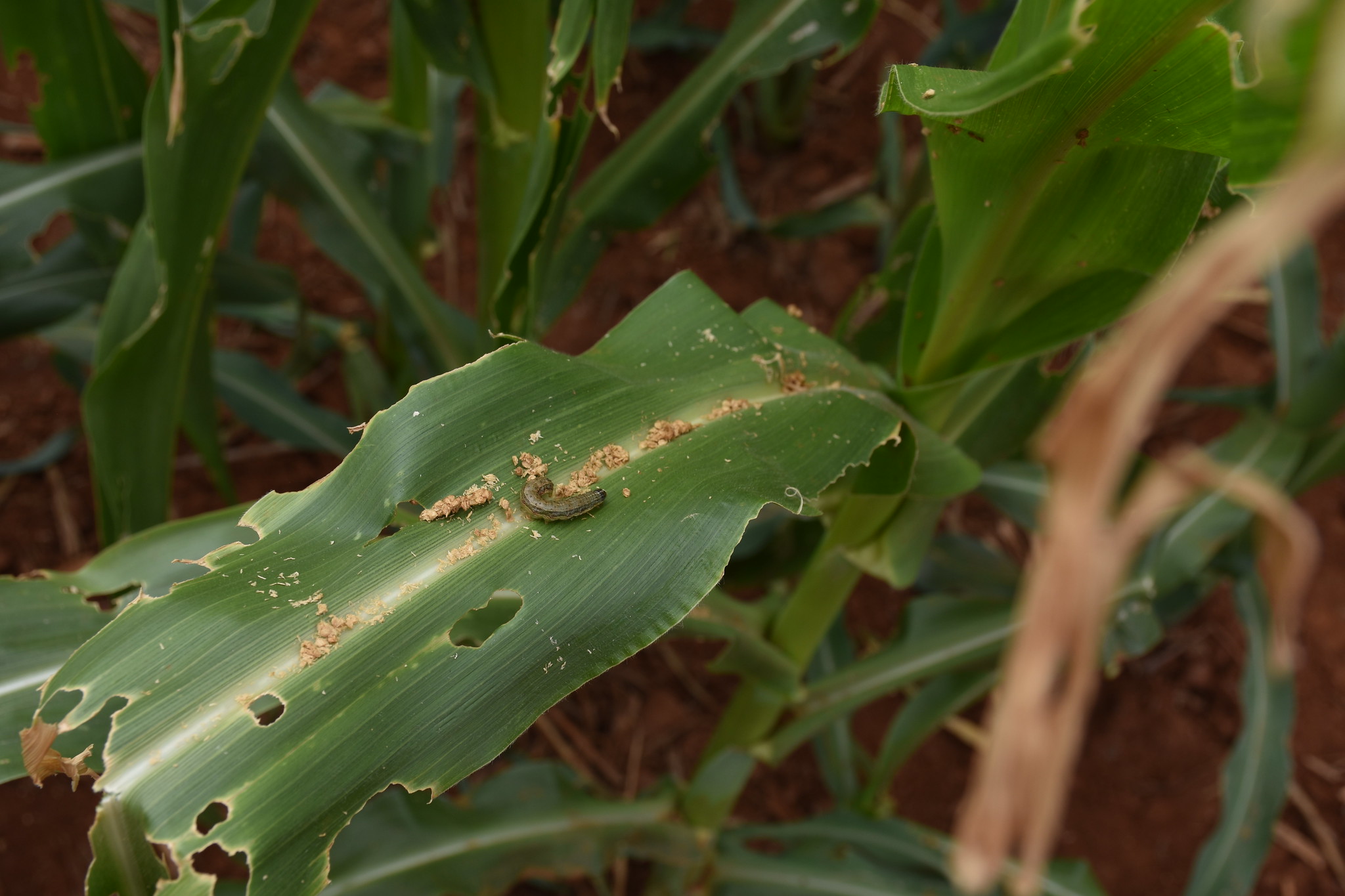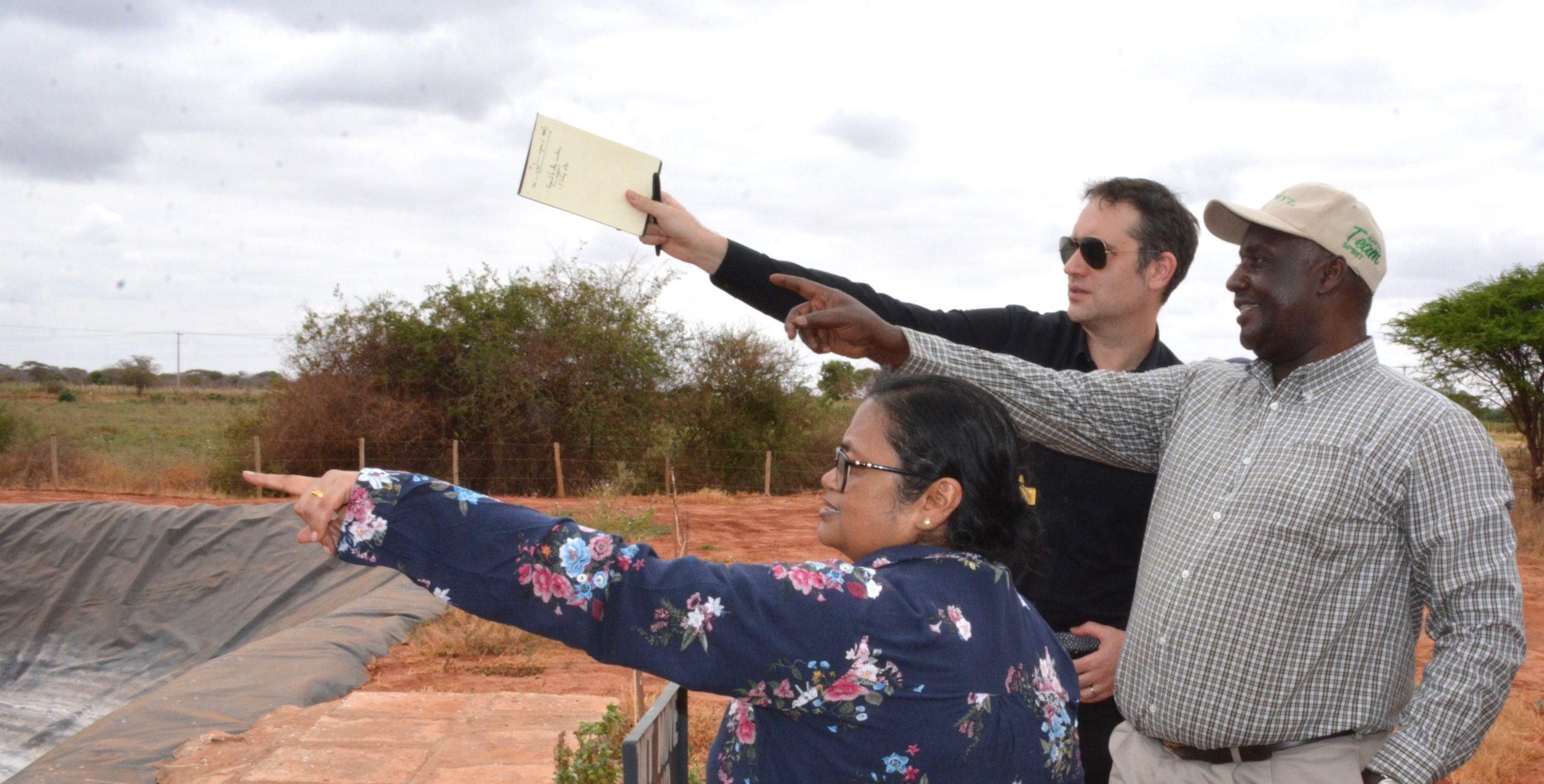Maize farmers from Kibwezi and neighboring regions gathered at the KALRO Kiboko Research Farm for an interactive session during the recent Farmers Field Day, eager to learn practical solutions to one of maize’s most destructive enemies — the fall armyworm (FAW).
The event, organized by the Kenya Agricultural and Livestock Research Organization (KALRO) in partnership with CIMMYT, aimed to raise awareness among farmers about integrated pest management (IPM) strategies that go beyond conventional pesticide use.
FAW has become a persistent and familiar threat to maize farmers in Kenya. While many farmers rely on pesticides for control, this approach often leads to pest resistance and declining control over time.
Abou Togola, CIMMYT Entomologist for Africa, explains how CIMMYT is supporting both farmers and researchers in tackling the fall armyworm (FAW) challenge:
“CIMMYT has played a key role in developing and promoting several FAW-tolerant maize hybrids as a component of the integrated pest management (IPM) technologies to help farmers manage FAW sustainably,” he said. “We work closely with local researchers at KALRO to ensure that the solutions we introduce are suited to farmers’ needs and local conditions.”
Through the collaborative efforts of CIMMYT and KALRO, demonstration plots were established at the Kiboko Research Farm to showcase the effectiveness of combining three complementary fall armyworm (FAW) management strategies: the virus-based biopesticide Fawligen, the beneficial fungus Metarhizium anisopliae (Detain), and Fortenza Duo seed treatment — all integrated with the FAW-tolerant maize hybrid FAWTH2002.
By combining these approaches, farmers can effectively protect their crops without over-relying on synthetic pesticides, reducing the risk of pest resistance while improving yields and promoting sustainable pest management practices.
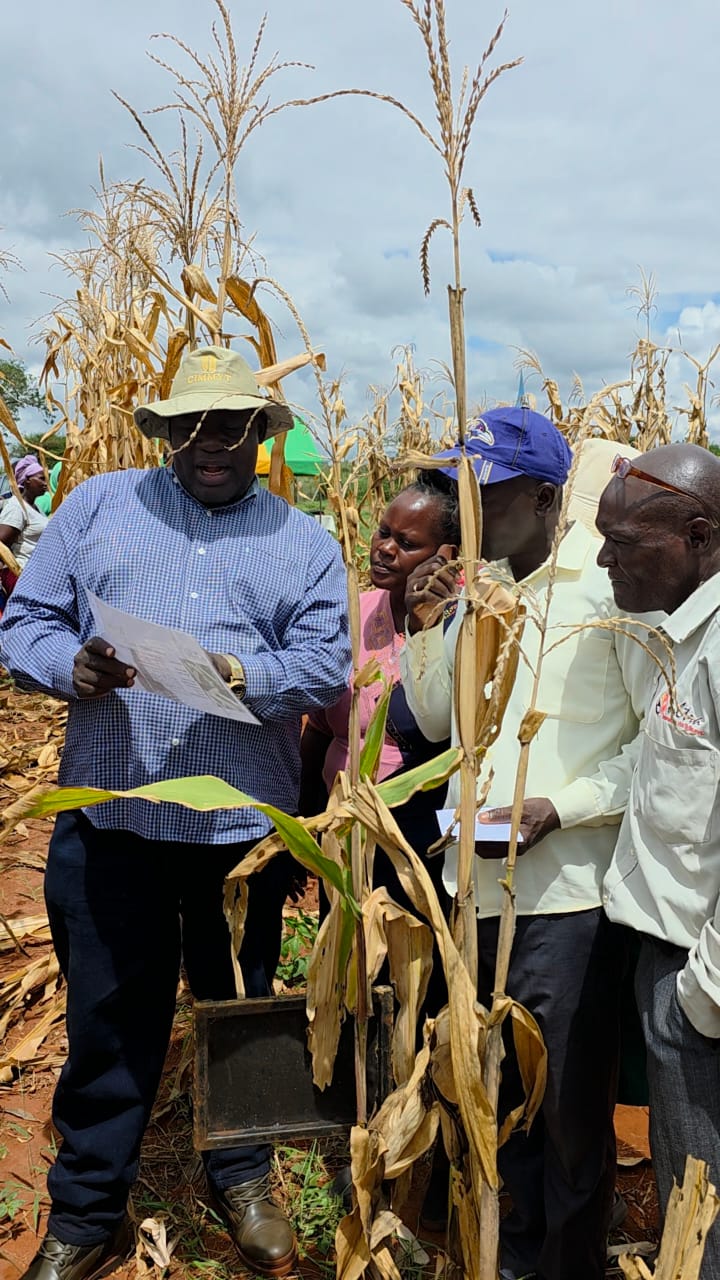
During the field visit, farmers had the opportunity to inspect live demonstrations of FAW-tolerant maize varieties alongside susceptible varieties, allowing them to compare performance side by side in terms of yield potential and resilience to pest damage. As they walked through the plots, farmers could see firsthand the visible differences in leaf health, cob formation, and overall plant vigor — a powerful learning experience that practically displayed the tangible value of investing in improved, resilient seed varieties.
“Maize is an important crop, and farmers need to be equipped with knowledge of the full range of management tools,” said Abel Too, KALRO Seed Specialist. “This field day was designed to share those options with farmers and to discuss climate-smart practices that can improve their yields.”
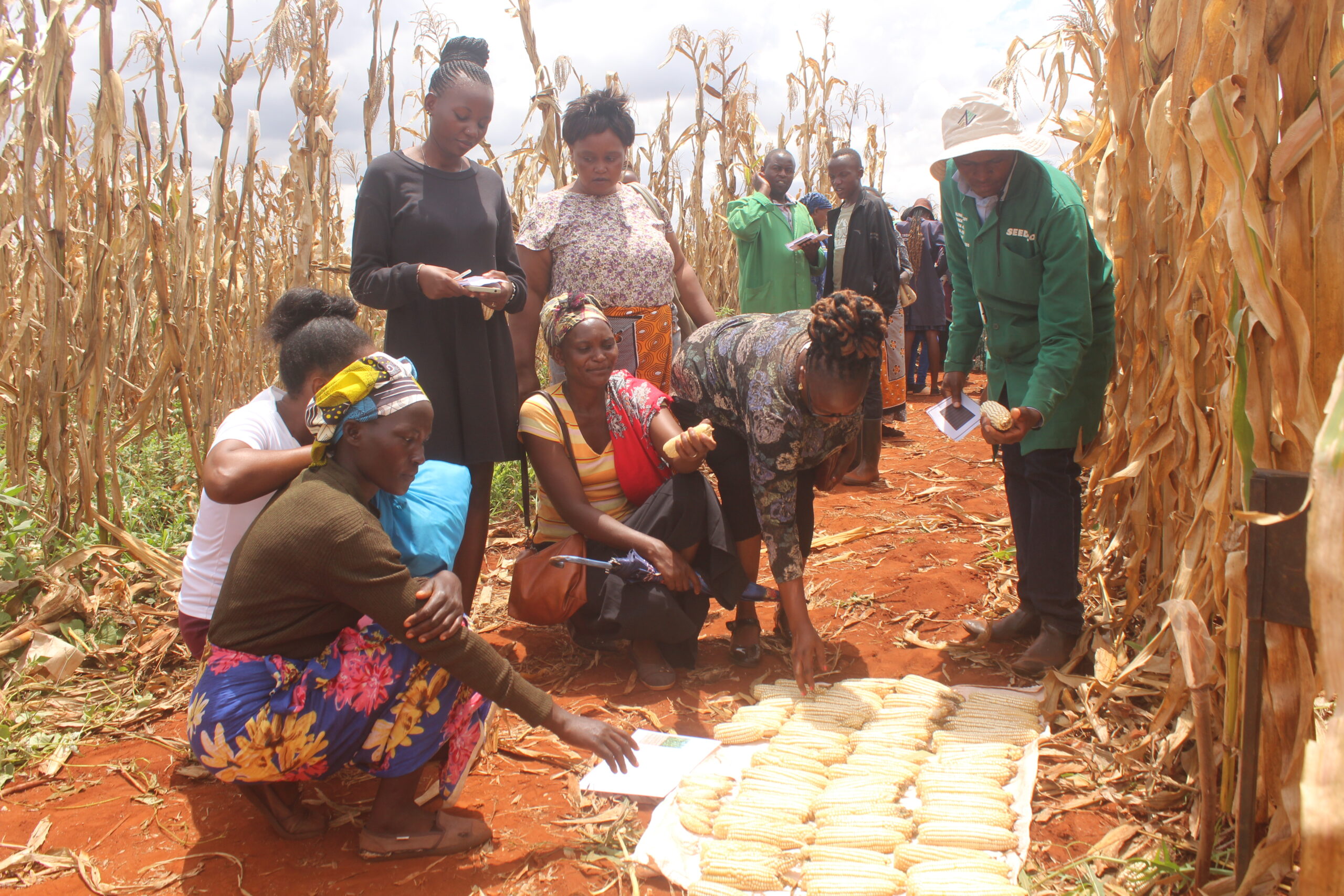

Togola emphasized the importance of a multi-pronged approach and meaningful farmer engagement.
“No single option can control FAW. When the same pesticide is used repeatedly, pests develop resistance. That’s why we promote cost-effective, environmentally friendly alternatives that farmers can combine to protect their crops.”
He also highlighted the value of farmer participation in the research process:
“Through on-farm demonstrations, we also learn from farmers’ feedback, which helps us refine our technologies and ensures they are practical and scalable across different farming systems,” he said.
A Promising Future: Youth vs FAW

The Farmers Field Day also attracted many young farmers from the area, keen to improve their maize production and explore new technologies.
Beatrice Nthema, a 25-year-old farmer, expressed her strong interest in learning more about FAW control:
“My family has been farming since I was young, and now I farm one acre of maize mainly for household consumption and another acre of green grams for business,” she explained. “But FAW has been a real challenge, and I’m looking for solutions so I can start expanding maize alongside my green gram business.”
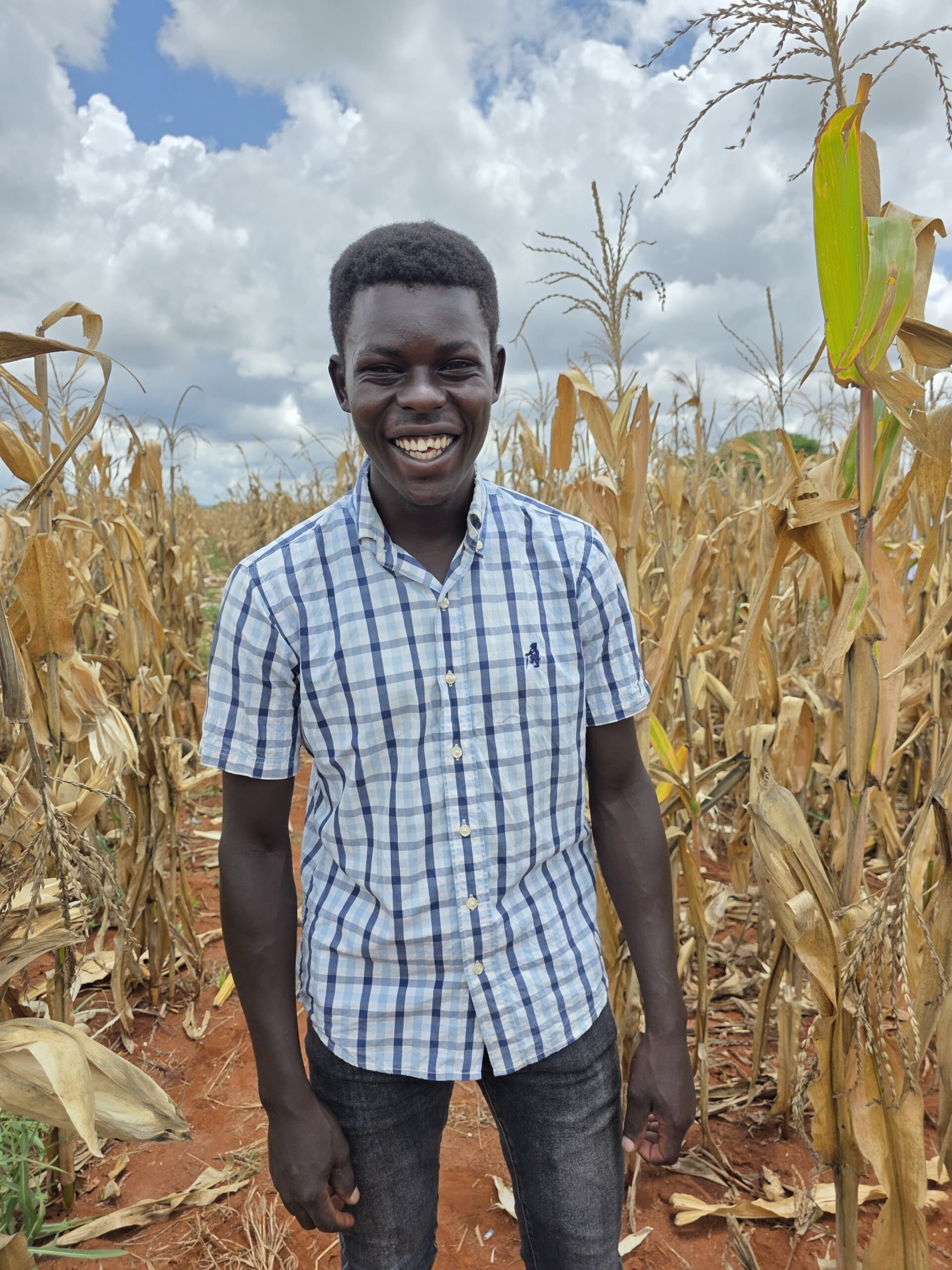
Similarly, Benjamin Muindi, also 25, was eager to learn more about pesticide options for controlling FAW:
“I farm two and a half acres, but because of pest infestations and poor seed quality, I often only harvest one bag of maize,” he said. “I’m very interested in the technologies we saw today and to learn about the dangers of pesticides. These recommendations could make a big difference for my farm.”
The presence of young farmers like Beatrice and Benjamin underscores the importance of providing practical, accessible solutions that empower the next generation of farmers to improve productivity, food security, and livelihoods.
The Farmer: The Heart of Agricultural Research
Moses Siambi, Regional Director for Africa at CIMMYT, highlighted the central role that farmers play in managing pests and diseases and in shaping research outcomes.
“If you are a maize farmer, you know how destructive FAW can be,” Siambi said. “That’s why we need to bring in new technologies and approaches that can help us protect our crops and improve yields.”
Siambi underscored the importance of farmer engagement in the research process, noting that farmers are not just end users — they are essential collaborators.
“The work that farmers do to manage pests like FAW directly helps us as scientists,” he explained. “When we see the best-performing crops and grain in the field, it’s because farmers have worked alongside us, and that success also benefits other countries where these solutions are adopted.”
Farmer feedback is central to CIMMYT’s efforts to improve and scale FAW management strategies. Siambi emphasized that farmers are on the frontlines, helping identify what works and where improvements are needed.
“The feedback we receive from farmers helps advance our research and develop solutions that are practical and effective,” he said.
His sentiments were echoed by Patrick Ketiem, KALRO’s Director of Agriculture Mechanization.
“Eighty percent of agricultural production in this country comes from smallholder farmers. We exist to support by seeking knowledge, developing technology, and ensuring that farmers have the right information to improve their yield.”
He encouraged farmers to apply the knowledge gained, share it with neighbors, and continue engaging with researchers as part of ongoing trials.
Rose Mutiva, one of the farmers at the Farmers Field Day, eagerly shared her observations after touring the plots.
“I have visited eight plots, and one variety — Mjeshi — looks very good for me. The leaves are healthy, and the harvest looks great. Seeing the difference between the varieties gives me the confidence to try these improved seeds on my farm.”
Mjeshi is the CIMMYT-released FAW-tolerant maize hybrid (FAWTH2002), a term that translates to “soldier” in the local Kamba language.
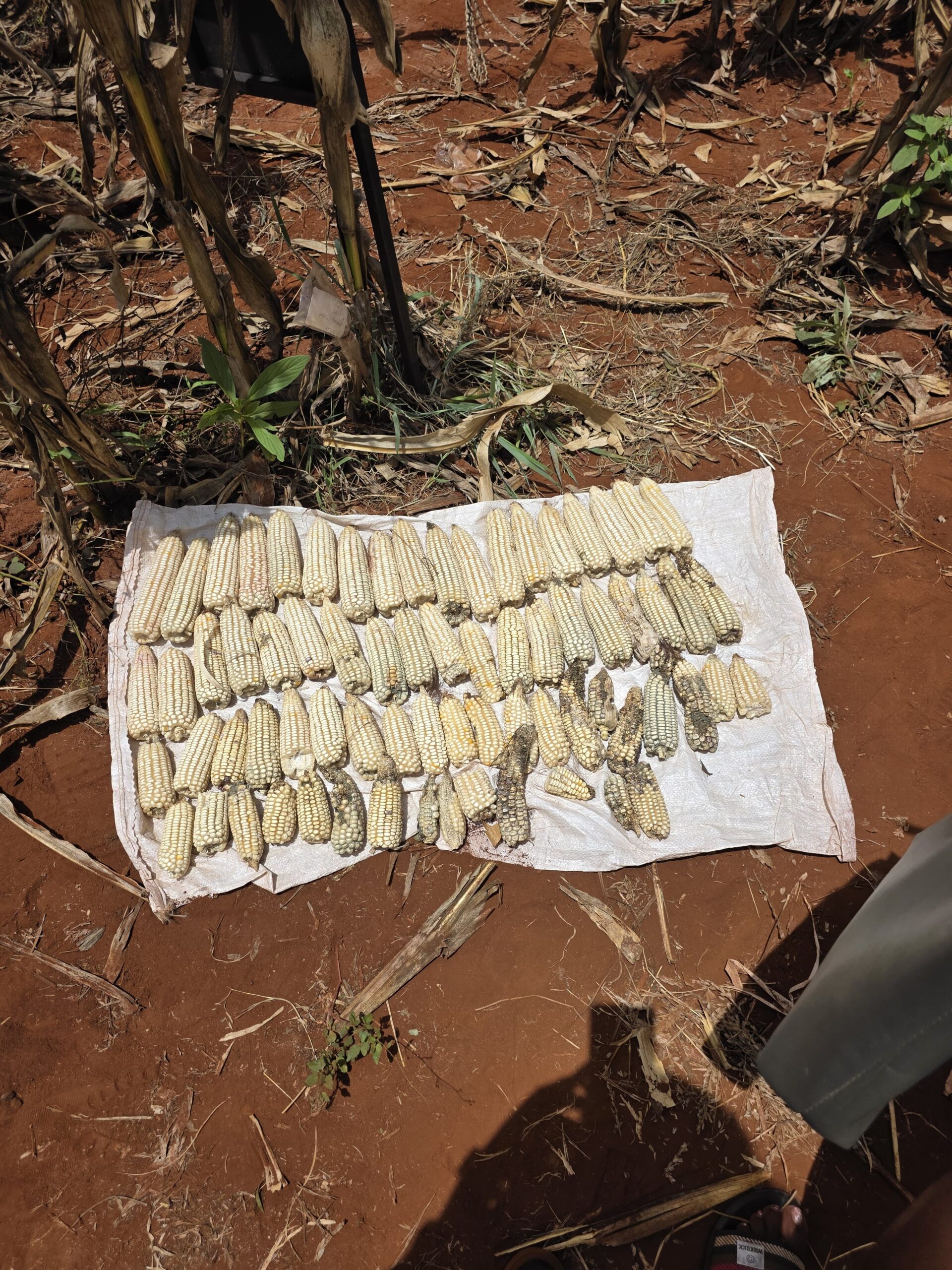
Toward a Sustainable Future
As the day drew to a close, Siambi reflected on the importance of sustained collaboration.
“CIMMYT’s continued support in developing integrated pest management solutions and engaging farmers is critical,” Siambi said. “We are committed to working alongside farmers, ensuring they have the tools and knowledge they need to protect their crops, boost yields, and secure their livelihoods. With the right technologies and farmer partnerships, we can turn the fight against FAW into an opportunity for growth in maize farming.”
As Beatrice, Benjamin, and many other farmers returned to their fields armed with new knowledge, their determination and openness to innovation stood out as an inspiration to farming communities across the region. With strong research partnerships, farmer-centered solutions, and a shared commitment to progress, these farmers are not only overcoming today’s challenges but also helping shape a more secure and prosperous future for African agriculture.
With climate change intensifying the risks faced by smallholder farmers, sustainable pest management has never been more critical. The Kiboko Farmers Field Day reaffirmed a vital truth: integrated pest management (IPM) works best when farmers, researchers, and partners come together — testing solutions in the field, learning from one another, and scaling up what proves effective. Together, they are paving the way toward a more resilient, inclusive, and food-secure future.
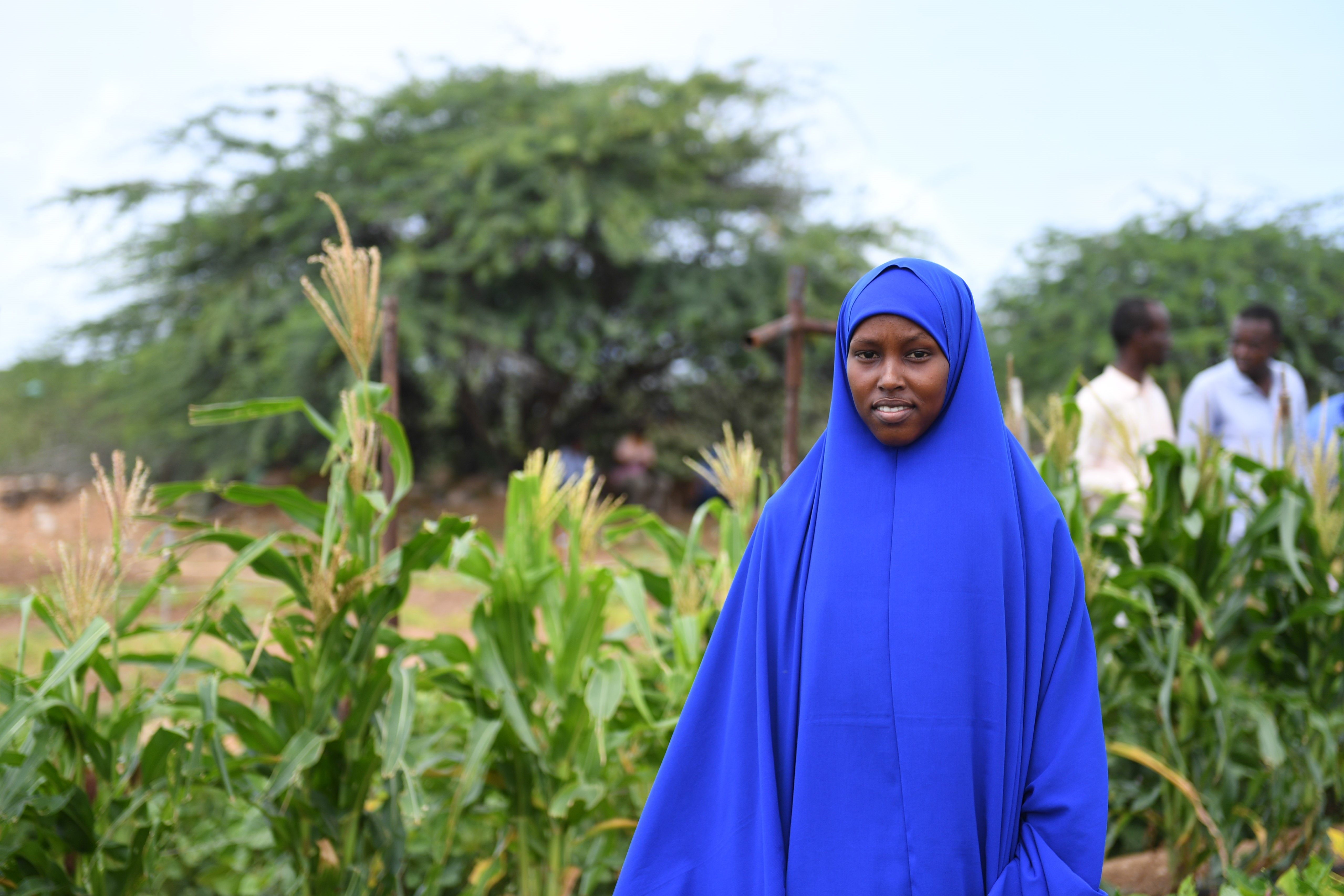
 Capacity development
Capacity development 